Creme chiboust is a custard dessert recipe that I’m sharing as part of my custard series. This light and airy filling is also called St. Honoré Cream since it’s used to make the classic dessert – St Honore gateau!
Chiboust cream is sweet, creamy, and melts in your mouth, and is such a versatile recipe too!
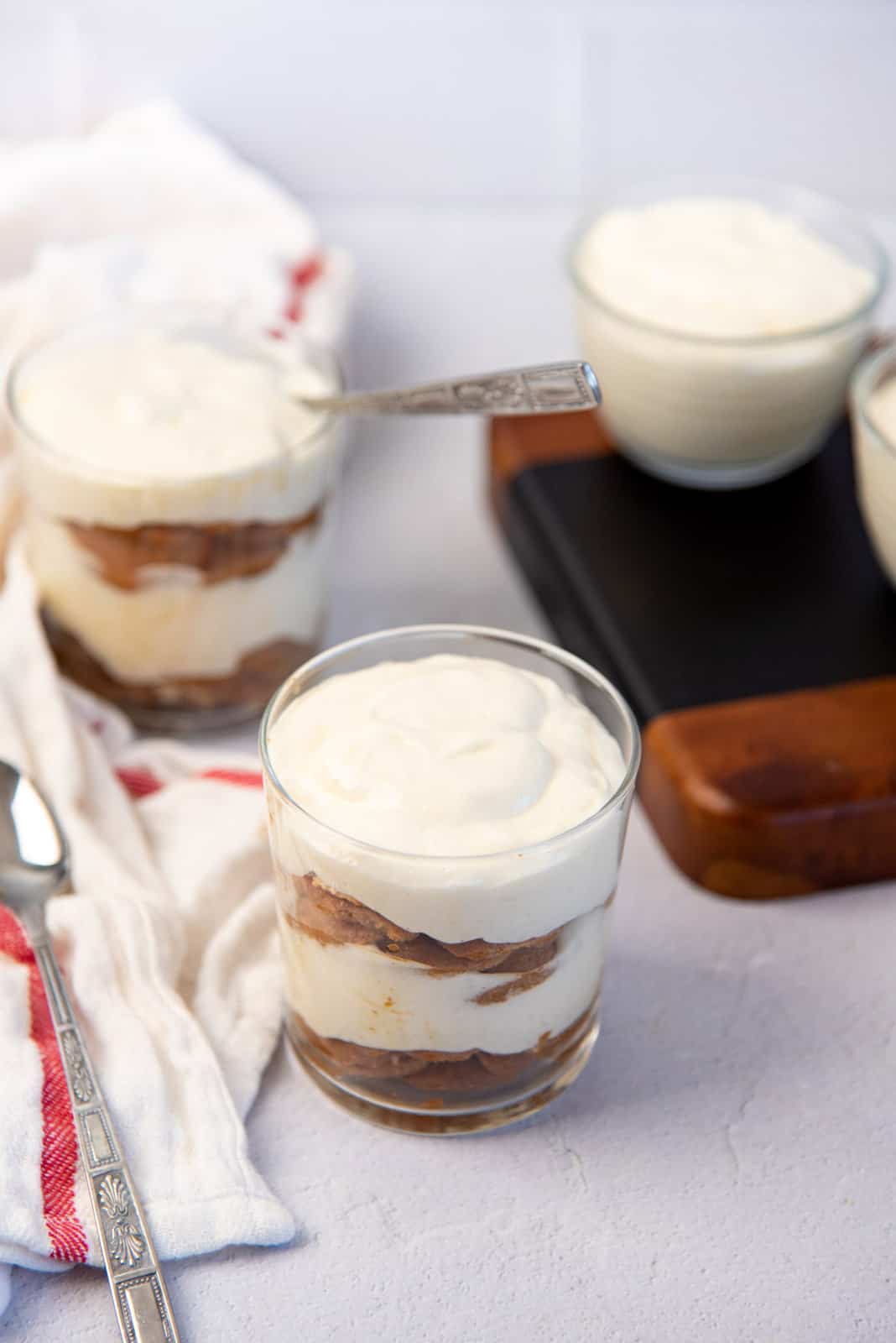
This recipe is a continuation of my comprehensive series on all things custard! I’ve already covered the basics of custard, and the recipes for,
- Pastry cream (vanilla pastry cream and chocolate pastry cream)
- Pouring custard
- Diplomat cream
- Cremeux
- Bavarian cream
And here, we’ll look at how to make creme chiboust.
Why I love this recipe
- This reminds me of a sabayon! And I LOVE sabayon.
- I love that I get to use all of the yolks for the custard, and the egg whites for the meringue.
- You have the flexibility to reduce the egg whites or add gelatin to make this more stable.
- It’s so light, it just melts in your mouth with every spoonful.
- While it can be used as a filling, creme chiboust can be used to make other desserts too.
What is crème chiboust?
Also known as chiboust cream or St Honore cream, this is a delicious pastry cream variation where a thick pastry cream (or creme patissiere) is mixed with Italian swiss meringue. The result is an airy but creamy mixture that has many delicious applications. It originates from France, created by Monsieur Chiboust in 1840.
Creme chiboust is made in two parts
Creme patissiere – which is a thick custard made with milk, sugar, egg yolks, cornstarch, and butter.
Italian meringue – egg whites whisked with a hot sugar syrup to form stiff peaks. Italian meringue is said to be the most stable way to make meringue, which adds to the stability of this pastry cream variation.
Another thing to note is that gelatin can also be added to the custard base to give the cream more stability as it cools.
Pastry cream based recipes
I wrote an in depth article about the different types of custard, and the desserts and recipes that can be made with them, which you can find here – Types of custard. But here’s a quick summary.
The difference between chiboust cream and pastry cream is that you USE pastry cream to make chiboust cream, by adding meringue. Therefore it’s lighter than pastry cream. So you could say that chiboust cream is part of the pastry cream family. Other members of this family include,
- Diplomat cream
- Mousseline cream
Other custard-based desserts include,
- Pouring custard (creme anglaise)
- Cremeux
- Bavarian cream
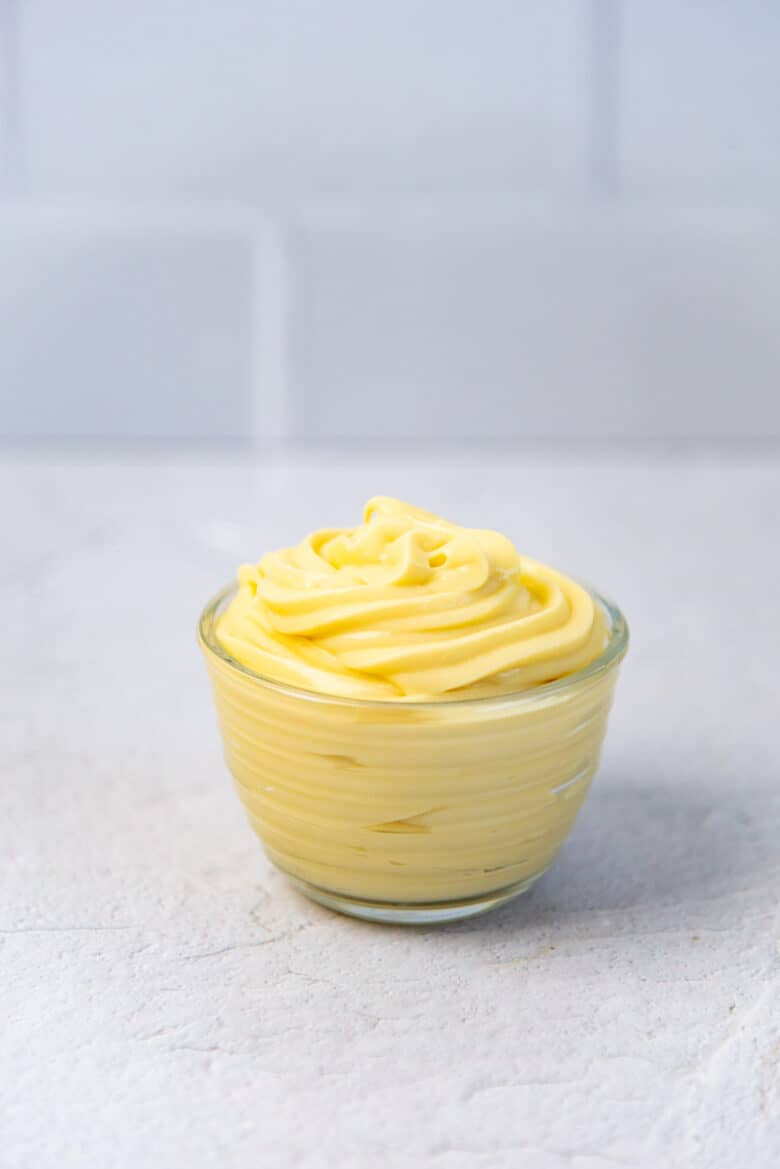
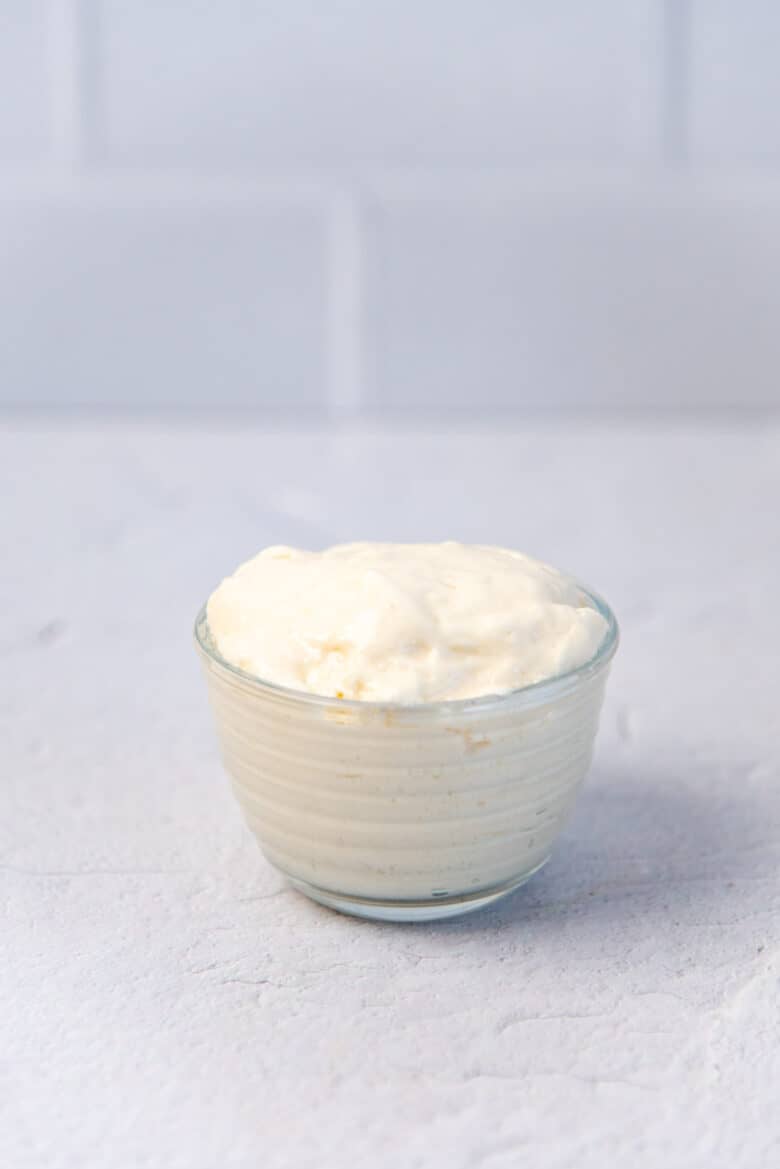
What you need to make this
- Whole milk (you can also use a combination of whole milk and heavy cream)
- Sugar
- Egg yolks
- Cornstarch
- Vanilla and salt (for flavor)
- Butter
- Gelatin (gelatin powder or gelatin sheets) – this is optional
- Egg whites
- Sugar and water (for the sugar syrup)
How to make creme chiboust
First step is to make the pastry cream.
The pastry cream for this is a thicker pastry cream than a standard creme patissiere.
The milk is heated until it’s steaming. While the milk is heating, the egg yolks, sugar, cornstarch, and flavoring are whisked very well until the mix is pale and smooth.
The heated milk is then added to the egg mixture in a thin, slow stream while frequently whisking. You only need to add enough milk to warm up the egg mixture – and this technique is known as tempering.
Add the tempered egg mixture back into the saucepan with the remaining milk (if you didn’t use all of the milk to temper the egg mix), and cook the custard over medium heat while whisking until it starts to thicken.
Since this milk mixture has cornstarch, it’s very important to let the custard come to a boil to “activate” the cornstarch’s ability to thicken the liquid. Make sure to whisk very frequently in between your checking to see if the mixture has come to a boil.
The custard is boiling when you see a few bubbles break the surface slowly, making a “bloop” sound. It sort of looks like lava bubbling up from the ground. When the custard has come to a boil, cook the custard while whisking for a further 1 minute or so.
Remove from the heat and pass the custard through a sieve. While the custard is still hot, add the butter and gelatin (if using) and whisk to melt and mix well. Cover the surface with plastic wrap, making sure that the whole surface is in contact with the pastry cream. Let it cool to room temperature. It’s important that the pastry cream be at room temperature for a stable creme chiboust.
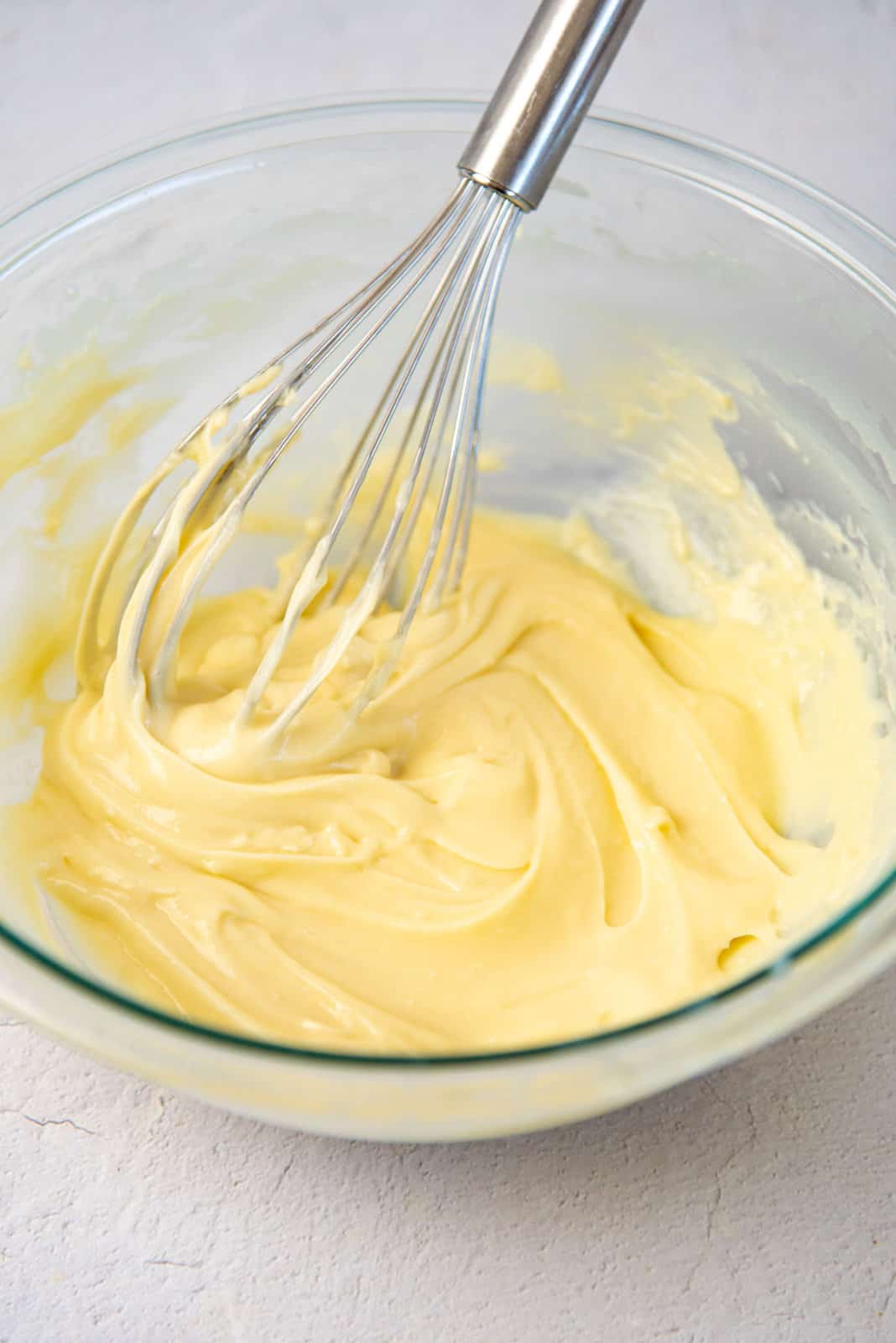
The second step is to make the Italian meringue.
Make the sugar syrup.
First, place the sugar and water in a saucepan and make sure that the all the sugar is dampened with the added water. You can also substitute some of the sugar with corn syrup if you’re worried about crystallization, but this is not necessary if you’re careful.
Heat the sugar and water mixture over medium heat, while gently swirling the pot to dissolve the sugar. When the sugar has dissolved, let the syrup come to a boil. Place the lid on the pot and let the sugar syrup simmer for about 1 – 2 minutes. The condensation that occurs inside the pot will wash down the sides of the pot to dissolve any sugar crystals on the sides.
Next, remove the lid and cook the sugar syrup while gently swirling the syrup from time to time. This swirling will evenly distribute the heat through the liquid. Using a candy thermometer, check the temperature of the sugar syrup. When the temperature reaches 235 F / 113 C, you can start to whisk the egg whites on low speed.
When the syrup reaches 240 F / 115 C (between 240 – 245 F / 115 – 118 C), it’s ready.
Preparing the egg whites.
While the sugar syrup is cooking, place the egg whites in a clean and dry bowl, with a pinch of cream of tartar (this helps to stabilize the egg white foam). It’s very important that you make sure that there is no trace of fat in your mixing bowl OR the whisk. Fat will interfere with the egg whites’ ability to form a meringue. Whisk the egg whites on low to medium speed when the syrup reaches 235 F. The egg whites should start to foam and form soft peaks by the time the syrup reaches the correct temperature.
Once the syrup is at the correct temperature, increase the mixing speed of the egg whites to medium and slowly pour the hot syrup in a thin stream into the egg whites. When all the sugar syrup is added, increase the speed to medium high and whisk the meringue until you have a glossy meringue with stiff peaks. Now you can make creme chiboust!
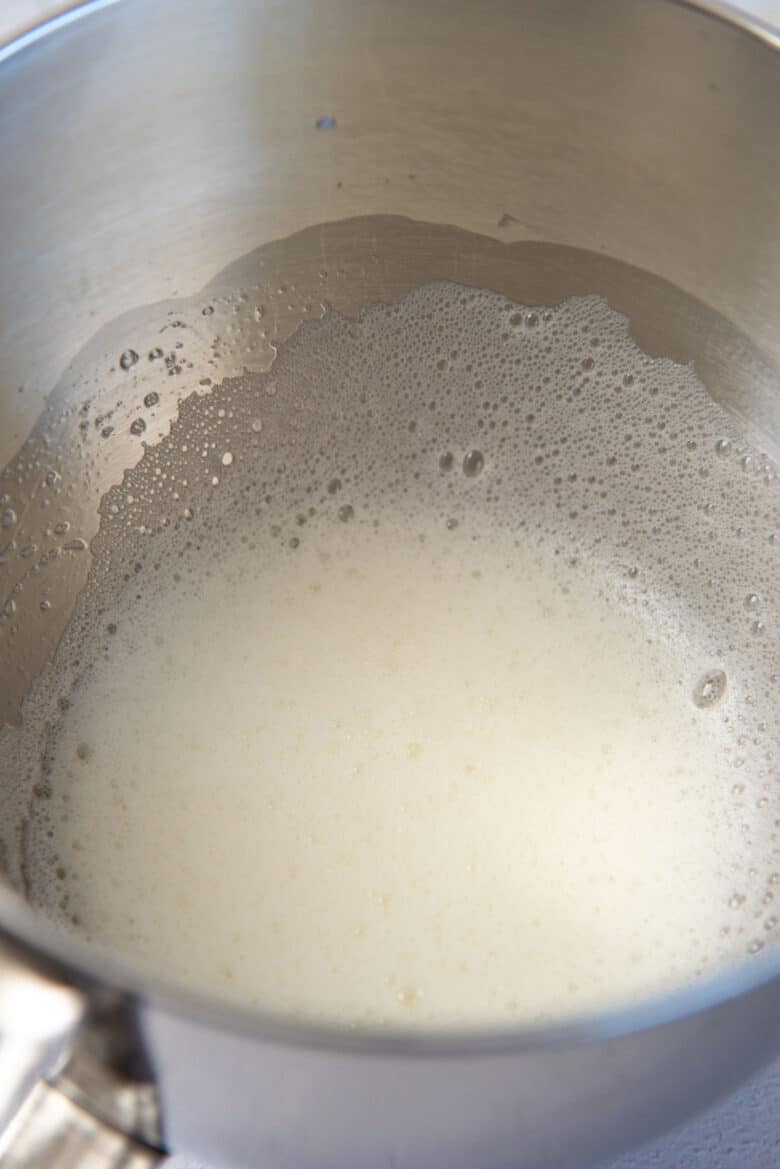
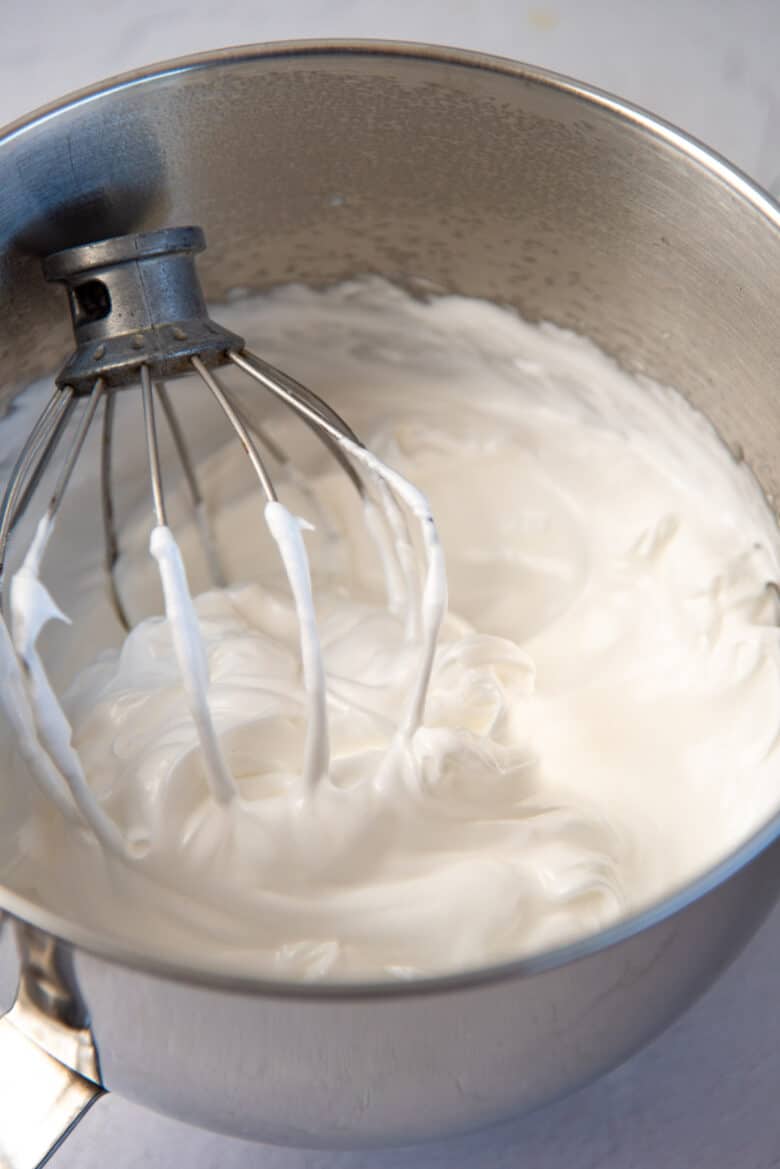
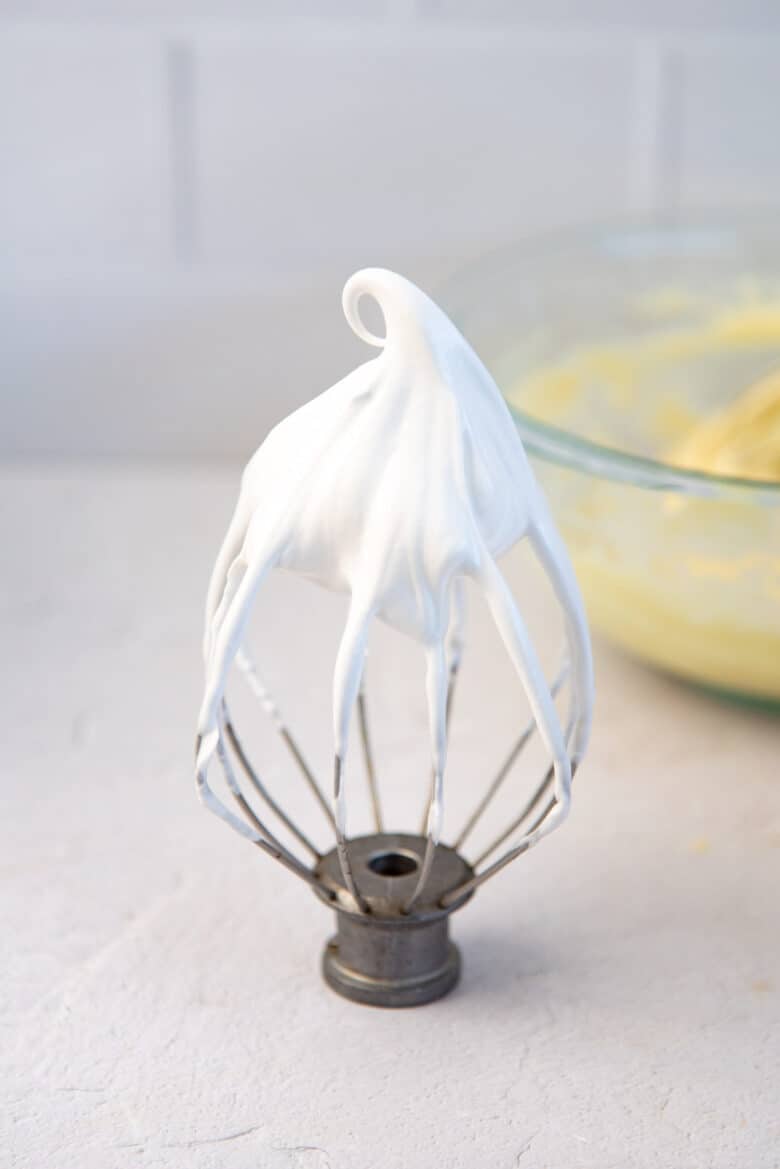
Combining the two elements.
Add about 1/3 of the meringue to the custard that is now at room temperature. Gently mix it in to loosen up the custard base. When it’s almost incorporated, add the rest of the meringue and fold it in until you have no white streaks of meringue in the custard.
You can use this immediately, OR you can let it cool down further in the fridge which will allow the cream to become more firm.
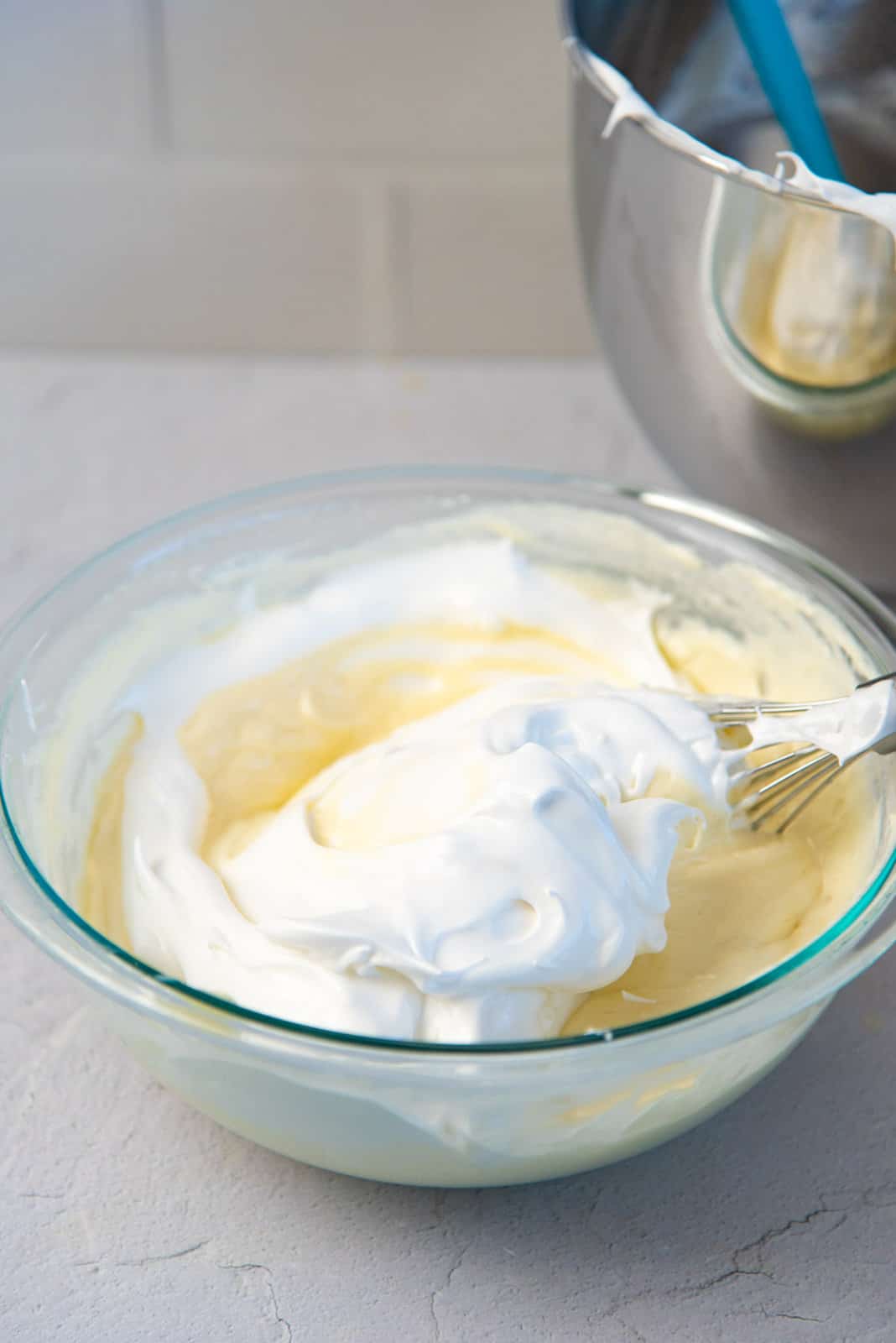
Questions and substitutions
Yes, you can. If you don’t need for it to “set” or do not require extra stability, you can leave out the gelatin. However, I do recommend that you add it, especially if you’re using it in a trifle or as a filling for a tart or St Honore gateau.
Just lower the speed for the egg whites so that they are whisking very slowly while you wait for the syrup. You can also stop the mixer for a couple of minutes, but make sure you re-whisk the eggs on low speed just before you add the syrup.
Alternatively, if the sugar syrup is ready before the egg whites are, just turn off the heat of your stove and let the sugar syrup sit there for the minute or two that it takes to whisk the egg whites to soft peaks.
When pouring the hot sugar syrup, add it in the space between the bowl and the mixer whisk. If the sugar hits the whisk, it’ll be flung everywhere and you could even burn yourself.
So be careful, and lower the speed of the mixer and add the sugar syrup slowly.
If your meringue splits and is looking dry and grainy, it’s very likely that it was over-whisked. Unfortunately, there isn’t an effective way to fix this, so it’s important to keep an eye on the meringue when whisking it to prevent this from happening.
This usually occurs because the egg yolks scrambled in the milk mixture. This happens for a few different reasons;
The heat of your stove was too high.
The custard mixture was not being whisked well, and parts of it “set” and scrambled.
Egg yolk mix was not tempered properly.
Follow my tips in my post for creme patissiere to ensure your custard does not scramble.
This recipe is gluten free because I use cornstarch!
Technically, yes, you can. Will it be the same? Probably not. The egg yolks add flavor and richness, and without them, it won’t taste the same.
You can however make the custard base by using cornstarch as a thickener without egg yolks, and use plant-based milk and butter as well. I highly recommend adding agar agar as a stabilizer as well.
For the meringue, you could use aquafaba to make an Italian “meringue”.
However, these are only suggestions. I have not tried to make a vegan version of this recipe, so I can’t be 100% sure it’ll work. But it is possible with these substitutions.
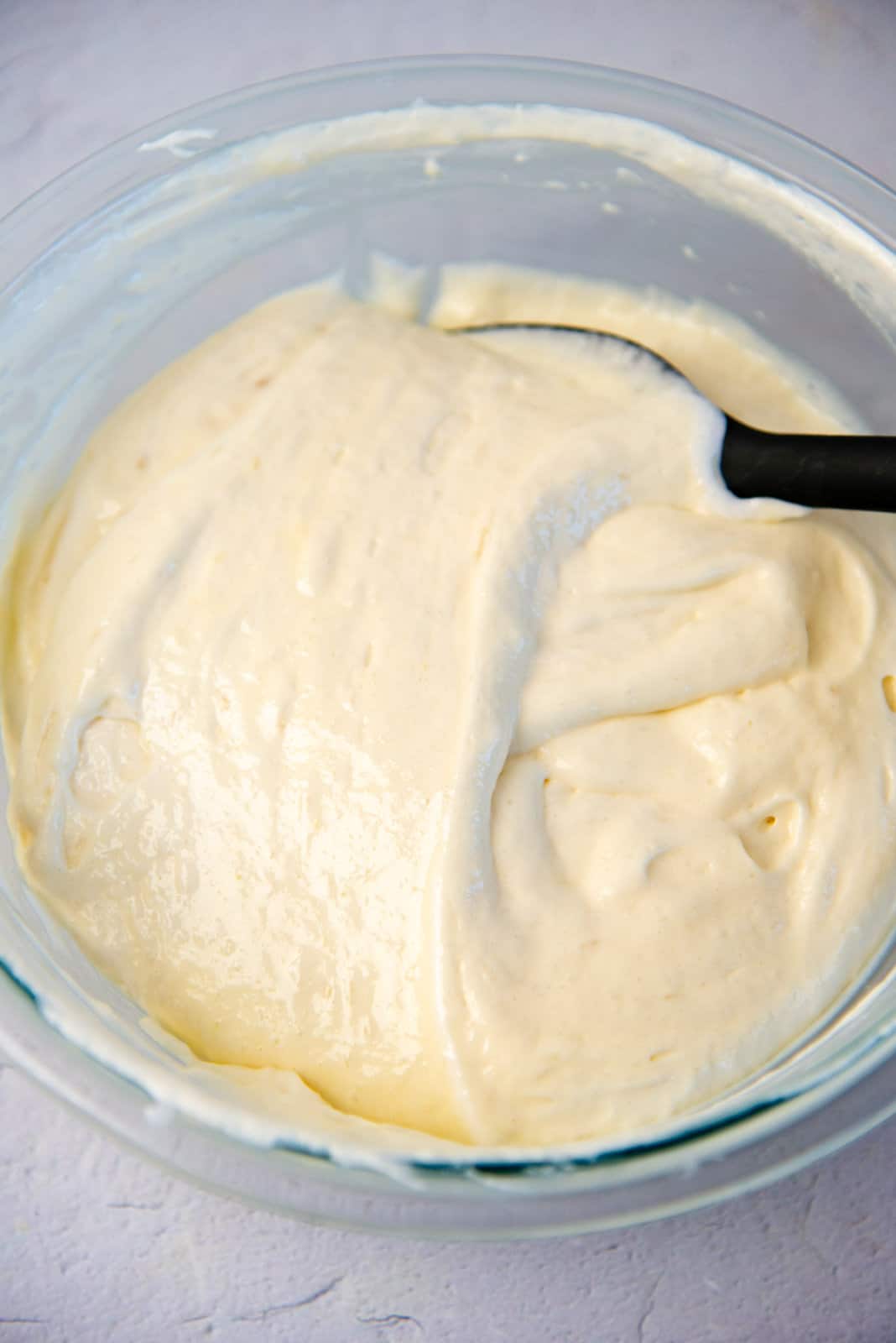
How to store creme chiboust
Creme chiboust should be used for the application you need it, as soon as it’s made. It can be stored in an air-tight container in the fridge for about 4 -5 days, but you will need to re-whisk it before using it to break the gelatin. The gelatin will still keep the cream stable after whisking, but it won’t set properly and will lose some of its volume.
Adding the gelatin and letting it set as a filling or topping certainly adds to the stability of the chiboust cream.
You can also freeze chiboust cream, but there is a chance that the texture of the cream will change as it thaws out due to the cornstarch in the pastry cream. If you’re using chiboust cream as a “pudding” and not looking to pipe it as a filling or topping, this should be fine. I haven’t tried to freeze my chiboust cream, so I’m unsure how long it would last in the freezer, but it should last at least 2 months.
As with all custard-based desserts and recipes, it’s definitely best eaten within the first few days.
Creme chiboust recipe variations
Custard is such a versatile base to work with, so you can absolutely change the flavor of chiboust cream by changing the flavor of your pastry cream.
- Chocolate chiboust cream – Adding chocolate to your pastry cream.
- Coffee chiboust cream – Adding instant coffee to your pastry cream base (along with chocolate for a mocha variation).
- Rum or bourbon chiboust cream – Add about 2 tbsp of rum or bourbon to your pastry cream base to add a hint of booziness.
- Fruit-flavored chiboust cream – Adding freeze dried fruit powder is a great way to impart fruitiness without impacting the consistency of the custard. Raspberry, strawberry, or passionfruit are great fruit flavors to start with, and will make a delicious chiboust cream.
- Salted caramel or butterscotch-flavored chiboust cream – By making a caramel with the sugar and dissolving this in the milk, OR by substituting the sugar with brown sugar.
- You can also infuse the milk with other flavors before making the custard. For example,
- Tea flavor (black tea is great!)
- Floral infusion (lavender or eldferflower)
- Matcha powder
Serving suggestions
There are so many desserts that you can make with chiboust cream!
Most notably, the St Honore Gateau or St Honore Cake. This is a delightful dessert composed of,
- A base layer of crisp puff pastry,
- Choux pastry puffs (or chouquettes) lining the edge of the pastry base (usually held in place with caramel),
- Creme chiboust filling in the middle,
- Creme chantilly piped on top,
- Optional – caramel drizzled over the choux pastry ring.
But this is not the only dessert that you can make with this spectacular cream. Here are some more suggestions,
- Serve with fresh fruits, with chiboust cream spooned over the fruits.
- Place creme chiboust in individual glasses and let it set in the fridge. Serve it as an individual dessert, like a chocolate mousse or panna cotta or bavarian cream (crème bavarois).
- Since chiboust reminds me of tiramisu, you can also use it in a trifle (like this strawberry chocolate brownie trifle or chocolate hazelnut trifle where the pastry cream could be swapped out for chiboust cream)! A tiramisu-like dessert can be made by layering coffee soaked lady fingers or soaked vanilla wafers with creme chiboust.
- Due to the egg white meringue, this can also be used to make souffle-like desserts!
There are so many ways to enjoy creme chiboust that aren’t just the traditional St Honore gateau.
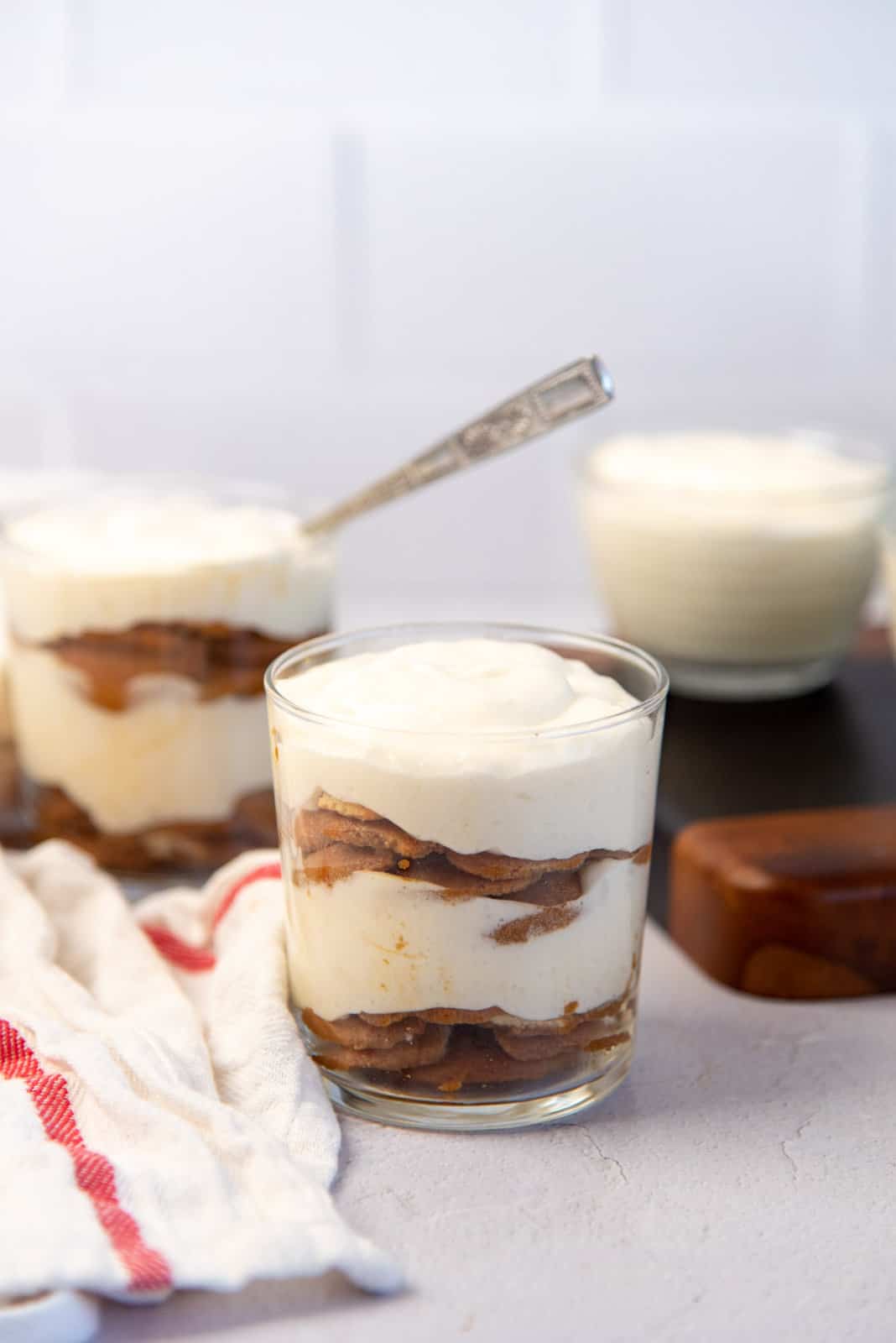
Tips for perfecting this recipe
Make sure to properly temper the eggs. This ensures that the eggs will not scramble when mixed with the hot milk.
Whisk while cooking to ensure that the milk is heating evenly and to prevent the eggs from “setting” and scrambling in the custard.
Make sure that the custard comes to a boil. Since it’s thick, the bubbles will be slower and thicker. It’s important that the custard is cooked for at least 1 minute (up to 2 minutes) at this temperature because it’ll activate the cornstarch properly so that the custard can thicken to the correct consistency.
Ensure that there are absolutely no traces of fat in your mixing bowls when whisking egg whites.
Fresh eggs are easier to separate into egg whites and yolks. Colder eggs are also easier to separate than room temperature eggs. You can use older eggs too – you just have to be careful not to break the egg yolks into the whites. If there are any traces of yolk in the egg whites, you will have to discard it.
Use room temperature egg whites, since they incorporate air better and form a more voluminous meringue! If you separated the eggs while they are cold, then let the egg whites come to room temperature before whisking it.
Use a candy thermometer to check the temperature of the sugar syrup. You do have some room for error for the sugar syrup temperature, as it can vary from 240 – 250 F (firm ball stage). If you don’t have a candy thermometer, you can perform a water test with your sugar syrup to see if it has reached firm ball stage. You can find out about the water test in my post about cooked sugar stages.
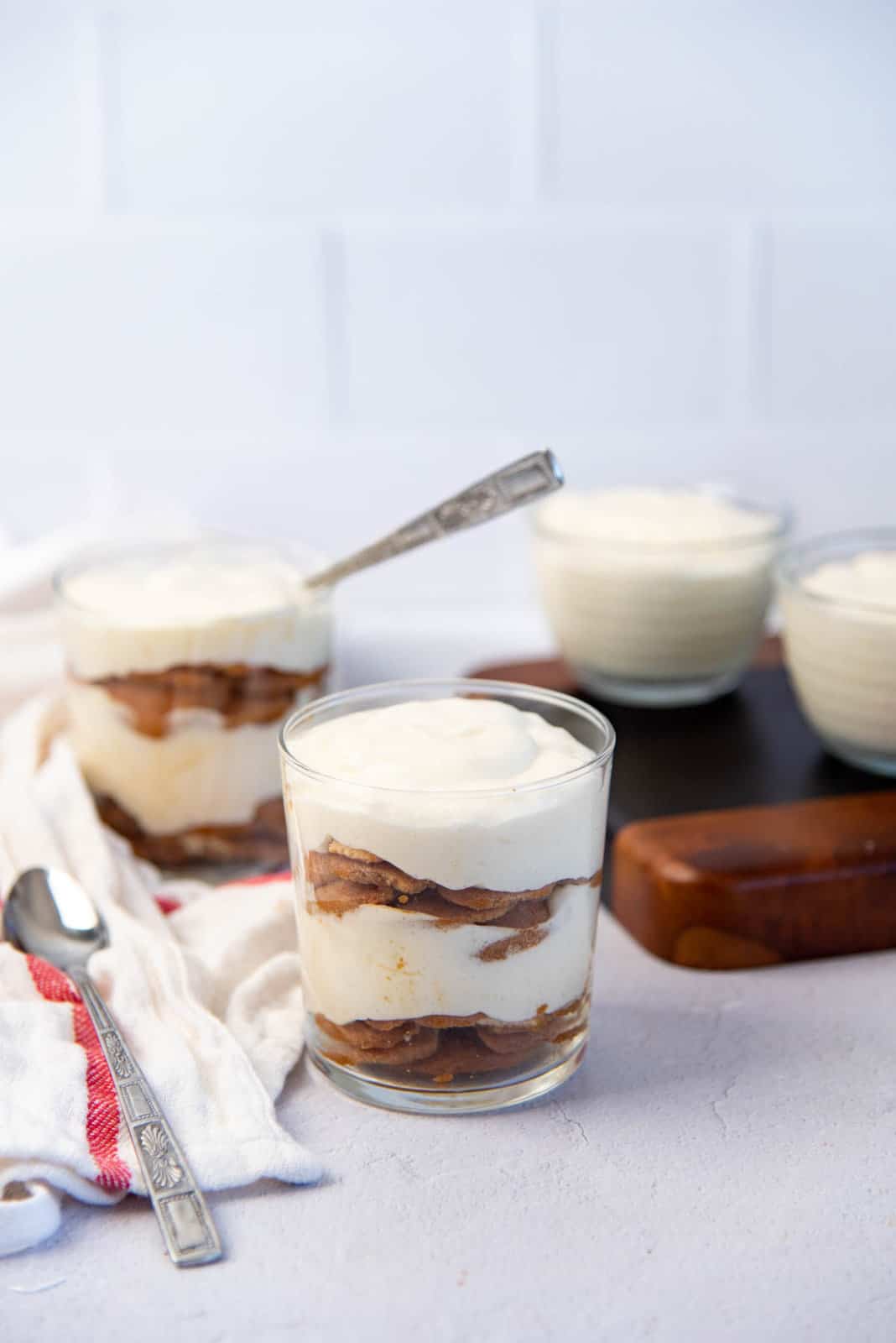
Looking for more recipes?Sign up for my free recipe newsletter to get new recipes in your inbox each week! Find me sharing more inspiration on Pinterest and Instagram.
Creme Chiboust Recipe (Chiboust Cream)
Ingredients:
Pastry cream
- 240 mL full-fat milk 1 cup
- ¼ tsp sea salt
- 25 g sugar about 2 generous tbsp
- 4 egg yolks from large eggs (save the egg whites from these eggs for the meringue)
- 25 g cornstarch 2 ½ tbsp
- 1.5 tsp vanilla extract
- 30 g butter 2 tbsp
- 1 ½ tsp powdered gelatin 3.5 g or 2 sheets of gold gelatin
- 2 tbsp water
Italian meringue
- 4 egg whites at room temperature (make sure that there is absolutely no egg yolks or any other fatty residue that could mix with the egg whites)
- 150 g white sugar ¾ cup
- 80 g water ⅓ cup
Instructions:
Blooming the gelatin
- If you’re using powdered gelatin, place the water (regular tap water, not warm) in a small bowl. Sprinkle the gelatin powder over it, and gently stir it to hydrate the gelatin. Set aside to let it bloom for at least 10 minutes, and until the custard is cooked.1 ½ tsp powdered gelatin, 2 tbsp water
- If you’re using sheet gelatin, place some cold tap water in a big bowl or dish that is big enough to fit the gelatin sheets. You can cut them in half if needed.
- Completely submerge the gelatin sheets in the water. It's OK if the sheets stick to each other.
- When the gelatin sheets have bloomed, they should be very soft. You can keep them soaked in water until the custard is cooked. Before adding the gelatin sheets, you must take them out of the water and squeeze them in your hands to remove the excess water before adding them to the custard.
Making the pastry cream base
- In a small saucepan, place the milk and salt and heat until the milk is steaming, and it's just about to simmer. The milk does not need to come to a boil to make custard with it.240 mL full-fat milk, ¼ tsp sea salt
- While the milk is heating, in a separate bowl, place the egg yolks, sugar, vanilla, and cornstarch. Whisk very well until the egg yolks start to look a little pale and thick, and there are absolutely no lumps in the mixture.25 g sugar, 4 egg yolks, 25 g cornstarch, 1.5 tsp vanilla extract
- Temper the egg mixture by pouring the hot milk into the egg yolk mixture in a SLOW and THIN stream while constantly whisking the egg yolk mixture. This will ensure that the egg mixture warms up gently without turning into scrambled eggs. You would only need to add about ½ – ¾ of the milk mixture to achieve this.
- Once the egg mixture is tempered, add the tempered egg mix back into the pot with the rest of the milk, and return it back to the stove.
- Heat the custard base over medium low heat while whisking very frequently. Make sure to use the whisk to get all the corners and edges of the pot to ensure that the milk is not “setting” anywhere and forming scrambled eggs.
- The custard will start to thicken, but keep whisking until the custard starts to come to a boil. To check if the custard is boiling, you will need to pause whisking for a few seconds at a time to check if there are any bubbles breaking the surface.
- After the first bubbles break the surface, keep cooking the custard while constantly whisking for a further 1 – 2 minutes.
- When the custard has finished cooking, remove it from the heat and pass it through a sieve into a large bowl.
- Add the butter and bloomed gelatin and whisk until the butter and gelatin have dissolved and mixed in completely with the custard.30 g butter, 1 ½ tsp powdered gelatin, 2 tbsp water
- Place a plastic wrap over the surface of the custard, and make sure that the plastic wrap is touching the whole surface of the custard to prevent a skin from forming on top.
- Allow the custard to cool down to room temperature. Do not keep it in the fridge, as the gelatin will set the custard. If that happens, you'll need to whisk the custard before adding the meringue, and the gelatin will not set as well as you would want it to afterwards.
- When the custard is at room temperature (between 72 – 75°F), you can start to make the Italian meringue.
Making the Italian meringue
- Place the egg whites in a dry, clean metal mixing bowl. Add a pinch of cream of tartar and salt. Keep the bowl in your stand mixer and set it aside until the syrup is ready.4 egg whites
- Place the sugar and water in a small saucepan. Using a spoon or spatula, move the sugar around to make sure the sugar is hydrated by the water.150 g white sugar, 80 g water
- Heat the sugar syrup over medium / medium high heat. Swirl the pan to dissolve the sugar as the water heats up.
- When all the sugar has dissolved, close the pot with the lid, and let the mixture boil for about 1 – 2 minutes. This will allow water to wash down the sides of the pot to re-dissolve the sugar that may have crystallized. Alternatively, you can use a clean pastry brush dipped in cold water to brush the sides of the pot.
- Keep cooking the sugar syrup until it reaches 235°F / 113°C. Make sure to swirl the pot from time to time to evenly heat the syrup.
- When the sugar reaches 235°F / 113°C, you can start to mix the egg whites on low speed.
- The sugar syrup is ready to use when it reaches 240°F / 115°C (firm ball stage). It's OK if it’s anywhere between 240 – 245°F (115 – 118°C).
- At this point, the egg whites should be whisked to soft peaks.
- Pour the sugar syrup into the egg white mixture in a thin, slow stream while whisking the eggs on medium speed. Make sure to pour the sugar syrup between the bowl and the whisk to prevent the sugar syrup from splattering everywhere.
- Once all the sugar is added, increase the speed of the mixer to high and whisk the meringue until you have glossy, stiff peaks. This should only take a few minutes.
Making creme chiboust
- Add about ⅓ of the meringue mix into the room temperature custard, and mix to loosen up the custard base.
- Add the rest of the meringue and fold it in until there are no more white streaks in the custard. Be gentle when you fold in the meringue because if you mix it too vigorously, you will lose the air and it may deflate too much.
- It's very important to use the creme chiboust while it’s at room temperature, since it will set in the fridge. If you do want to keep the creme chiboust in the fridge, you will need to whisk it again before using. However, keep in mind that this will deflate the mixture AND not set as well again, because the gelatin has been disrupted.
Tips & Tricks
However, this ball is malleable and can be flattened with your fingertips easily.”
Notes on storage and use
Creme chiboust must be used right away after you make it, especially if you want the cream to set with the gelatin. Therefore, it’s not something I recommend you make in advance. However, you could use it as a filling or topping and then keep it in the fridge so that it can hold its shape once chilled. It’ll last in the fridge for about 4 – 5 days, but it’s best eaten within the first 2 – 3 days.Nutrition Information:
“This website provides approximate nutrition information for convenience and as a courtesy only. Nutrition data is gathered primarily from the USDA Food Composition Database, whenever available, or otherwise other online calculators.”
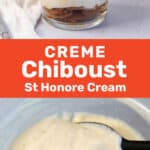
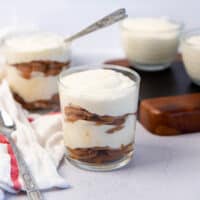
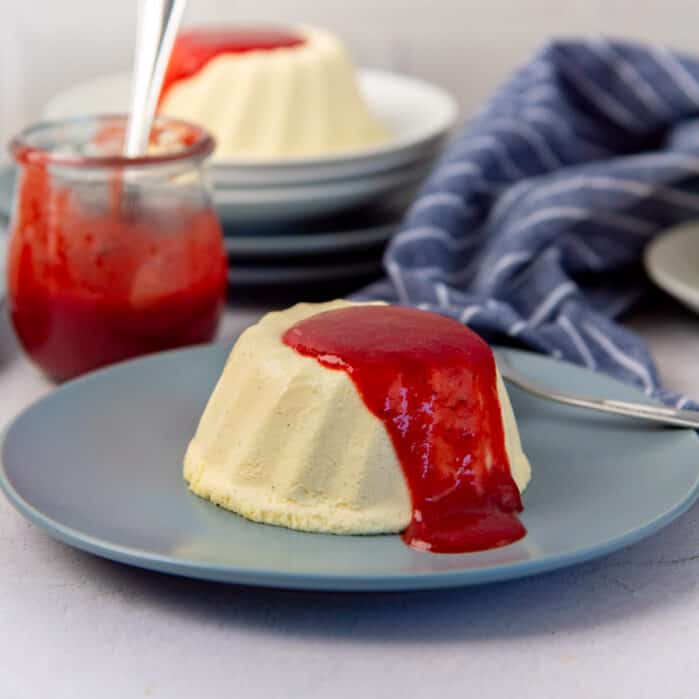
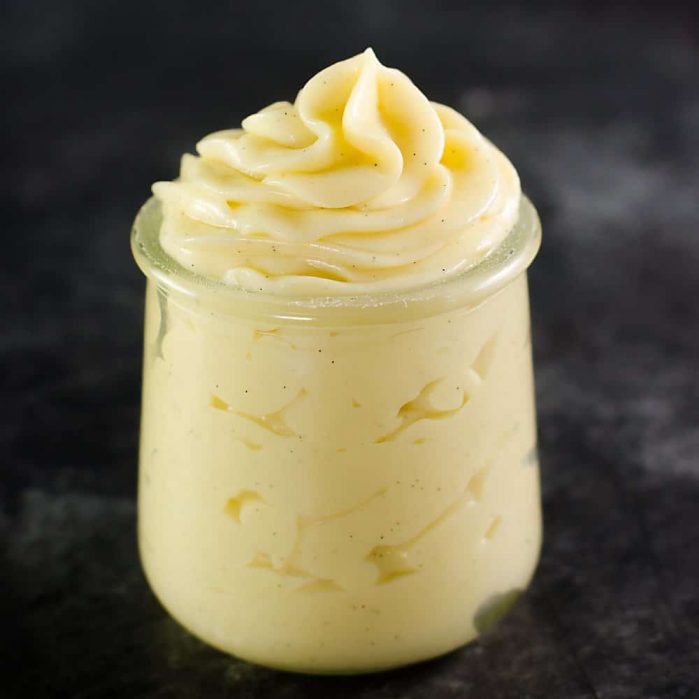
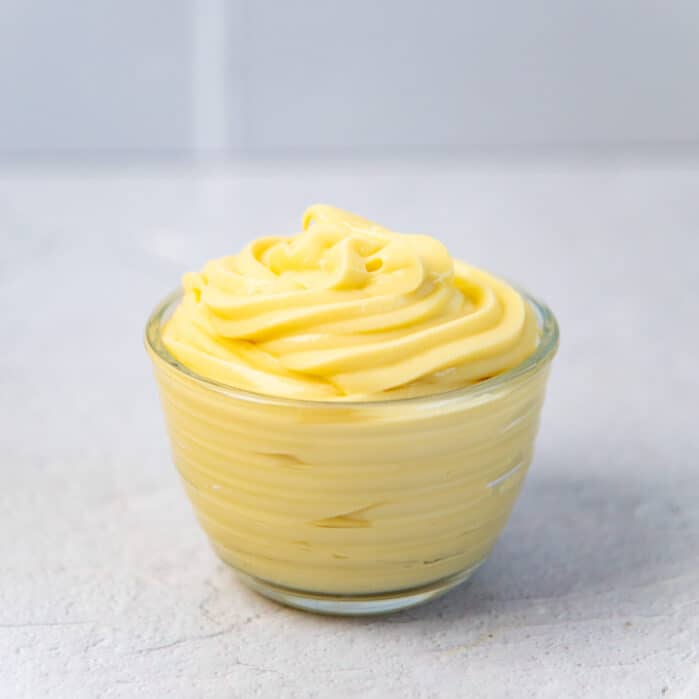
Reagan says
Hey! I’m making some nomade donuts today and was wondering if I could use this as a filling for them? Thanks!
Dini says
Hi Reagan
I personally wouldn’t use it, because this filling is really light and isn’t very stable. So a donut might be too heavy.
I would recommend diplomat cream for an airy, light but stable cream or mousseline cream for a richer, buttery filling.